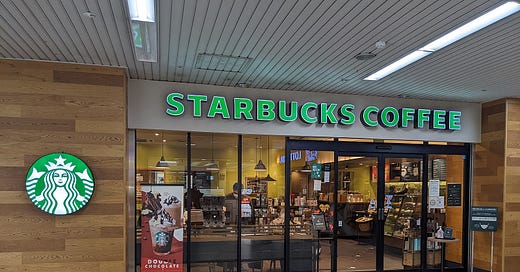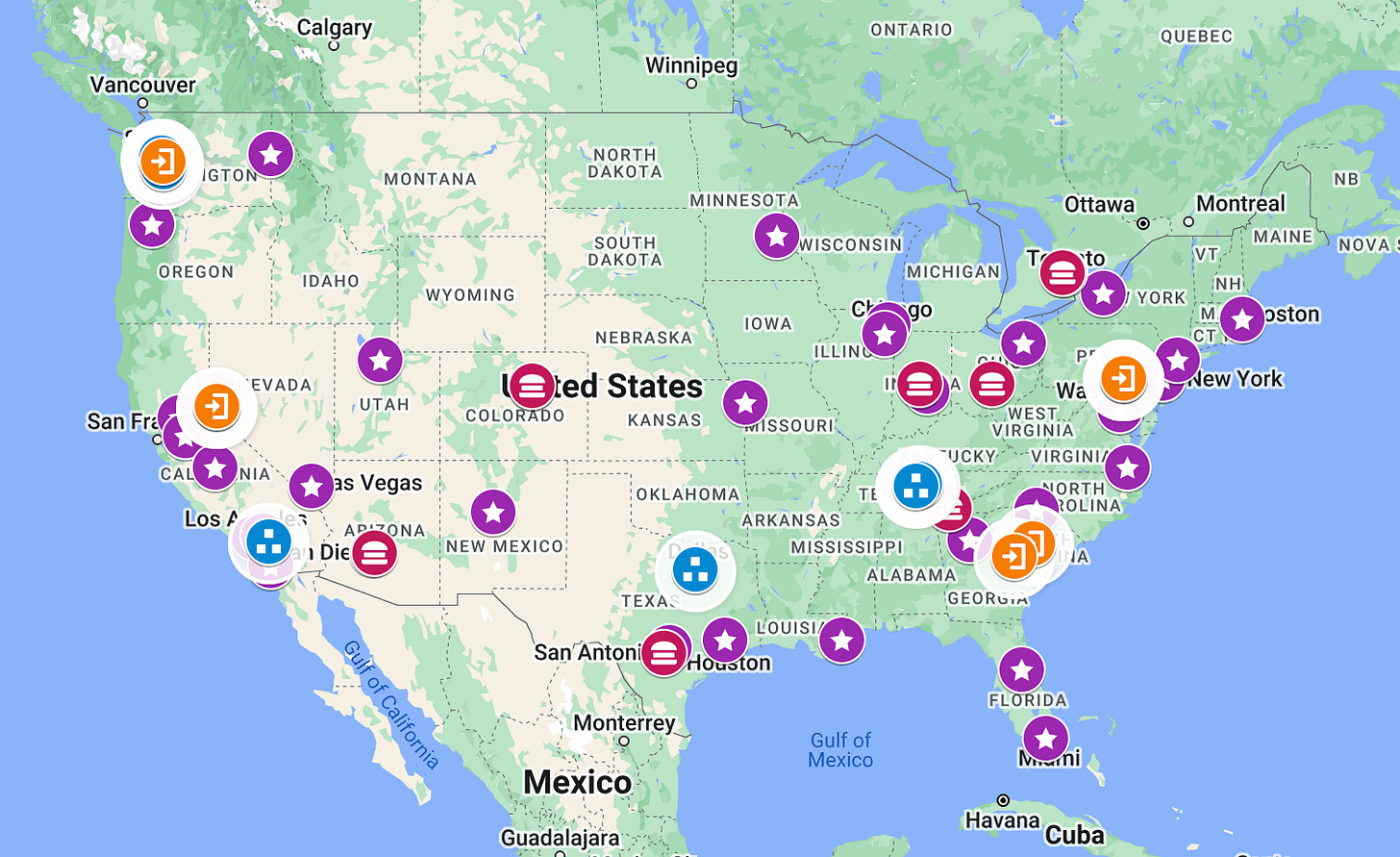We don’t tend to think of Starbucks as a logistics operation, but it manages 70,000 deliveries per week to its roughly 38,000 company-owned and licensed stores (about 16,000 of which are in the United States), each delivery comprised of consolidated goods from more than 1,000 suppliers and with multiple temperature requirements. A Walmart executive once said that people have the misconception that Walmart is a retail business, when in fact it’s in the distribution business, and some version of that makes sense for Starbucks as well.
As is well-known, there is an active unionization campaign ongoing at Starbucks. As of October 2024, 500 stores involving 11,000 workers have unionized. That’s a bit more than 5% of its 9,645 company-owned stores in the US, but it was enough for Starbucks to announce that it was ready to negotiate a master contract. That was in February of this year, and I’ve heard no news on the state of the negotiations. Perhaps the small victory accumulation model that Workers United has pursued will indeed result in a master contract, but it’s also possible they could benefit from new tacks providing additional sources of leverage.
As with all of our distribution network primers, this one comes with a map of Starbucks’s distribution network. If you have any updates to it, we’re always appreciative for an email at ontheseams.newsletter@gmail.com.
Green Storage and Roasting Plants
Starbucks has five domestic green (unroasted) coffee storage and roasting facilities, and only two more internationally, one in the Netherlands and one in China. The first was opened in Kent, WA in 1992. This facility, along with its roasting plants in Carson Valley, NV and Gaston, SC, produces about 1-1.5 million pounds of roasted coffee/week. Its larger facilities in Augusta, GA and York, PA produce about twice that amount.
As illustrated here, the three basic functions of these facilities are green storage, roasting, and packing:
Kent is the only facility to combine coffee, tea, and instant coffee production in one place. (They used to have a Teavana blending facility in Portland, OR, but it appears that all tea production goes through Kent now.) Gaston, York, and Carson Valley are all dedicated coffee roasting facilities, and Augusta does both coffee and instant coffee. The York roasting plant is unique for being right next to Starbucks’s largest Regional Distribution Center. These facilities appear to employ somewhere between 400-800 people each.
Regional Distribution Centers
In addition to its roasting plants, Starbucks also operates its own Regional Distribution Centers—six for coffee and some other store supplies, and two for store construction materials. Many of the RDCs are located close to its roasting plants, and in the case of York, it’s basically all one facility. Each non-construction materials RDC supplies coffee to about 3,000 stores.
Sometimes individual stores are supplied directly by RDCs. But the RDCs also supply the Consolidated Distribution Centers as well. I am uncertain as to the balance of RDC v. CDC store delivery but would guess, given the larger number of CDCs, that stores are primarily supplied via the CDCs.
Consolidated Distribution Centers
Starbucks has 35 Consolidated Distribution Centers (CDCs), which also supply their stores. As the name implies, they consolidate everything an individual store might need—dairy products, baked goods, paper products—and deliver to stores and other retail outlets that sell Starbucks stuff. All food and third-party products go through CDCs rather than RDCs. Each CDC supplies roughly 250 stores.
The CDCs are all run by third-party logistics firms, the most common of which are Quality Custom Distribution (which runs 22 CDCs) and Penske (7). To my knowledge, it’s these same companies that do store deliveries, though I’ve also heard of other 3PL’s like XPO that do store deliveries, so there are probably separate CDC and delivery providers in some places.
Basically for all products that aren’t coffee, tea, or the Evolution juice, Starbucks relies on third-party vendors. It famously bought in 2012 and then quickly disbanded the Bay Area bakery La Boulange, but it retained its recipe catalogue, which still informs its baked goods offerings today. However, all of those baked goods are made by third-party firms. For the baked goods/pastries, the largest supplier appears to be Toronto-based FGF Brands; for its sandwiches, it’s SK Food Group Incorporated; and for its wildly annoying cake pops*, it’s the Denver-based desserts company Stevens Charles. But Starbucks supposedly works with more than 1,000 suppliers for its wide variety of products.
Here’s SK Foods in action, producing those frozen sandwiches that are quickly thawed for consumption in store:
Starbucks recently announced that it is looking to generate savings in its baked goods offerings, so it’s possible that big changes are coming to its supplier network.
*As a younger person, I was always attuned to and annoyed by the myriad ways in which adults are infantilized. Since becoming a parent, I’ve been similarly annoyed by the ways in which parental anxiety is exploited and parental authority undermined. Cake pops exist at this nexus of annoyance. No adult should be eating small bits of cake off of a stick, and these corn syrup delivery mechanisms should not be placed low in the display case so that they catch children’s eyes before they do parents’. They are not cute, and they are not special. They should not exist.




